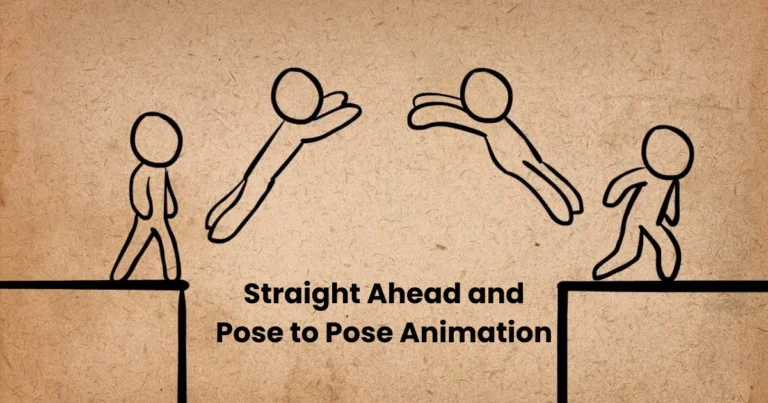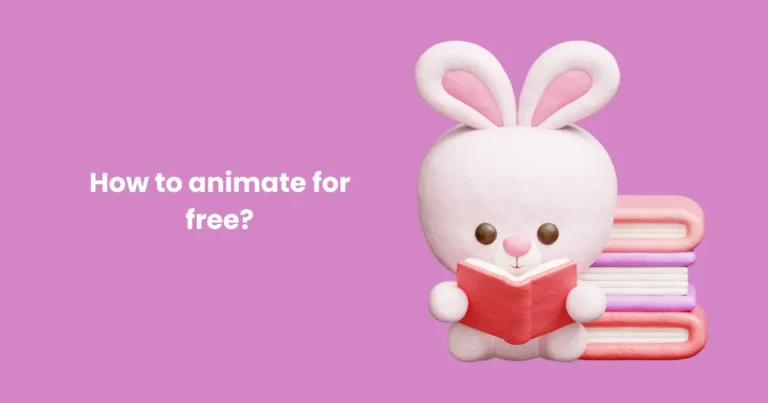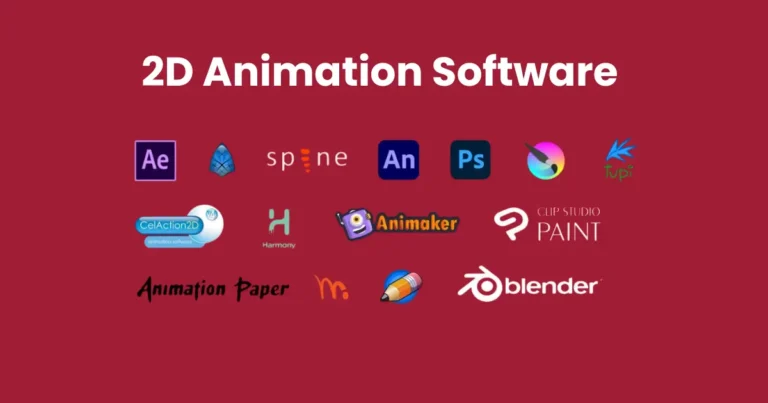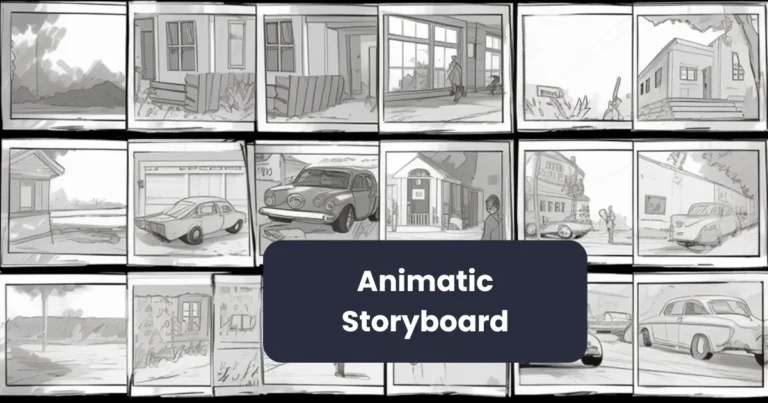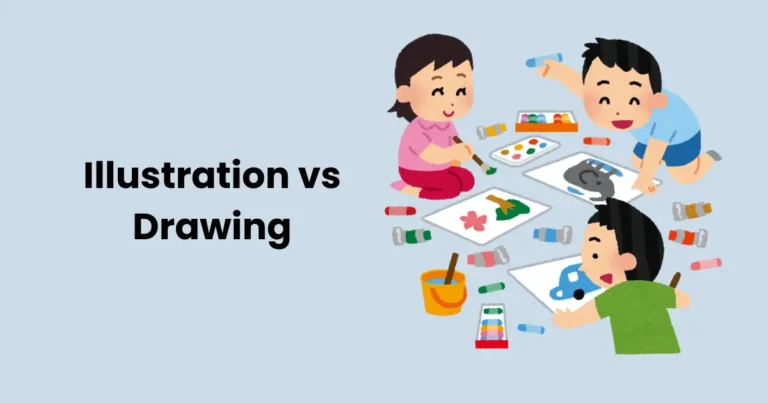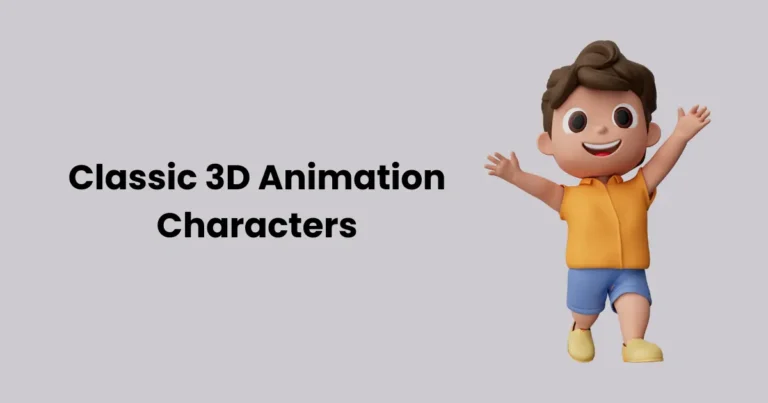What is Layout in Animation | Complete Process of Creating Layout
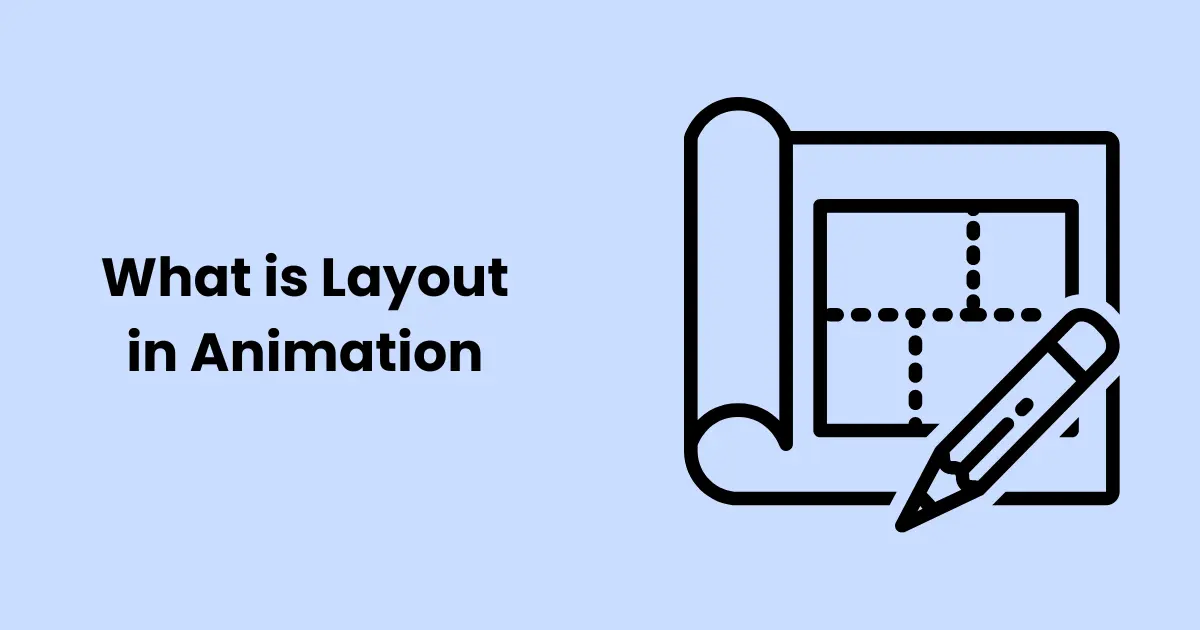
Contents
Layout in animation is a critical step that plays a foundational role in shaping the visual storytelling process. It refers to the arrangement of elements within a scene, including characters, props, and backgrounds, ensuring they interact seamlessly to support the narrative. This process helps establish the mood, perspective, and composition of each shot, guiding animators in bringing the storyboard to life.
The layout in animation not only sets the stage for the characters and actions but also provides the necessary framework for the entire animation production. Whether in 2D or 3D, a well-crafted layout can make a significant difference in the final product, enhancing both the aesthetic appeal and storytelling quality. In this article, we’ll explore the importance of layout in animation, its key elements, the process involved, and how it impacts the overall animation experience.
What is Layout in Animation?
Layout in animation is the process of designing the visual framework for each scene in an animated project. It involves determining the placement of characters, props, and backgrounds, along with other critical visual elements that contribute to the composition of the shot. Layout artists work closely with the director and storyboard team to create a visual representation of the scene that aligns with the script and narrative goals.
In essence, layout in animation acts as a blueprint for animators. It defines the perspective, camera angles, character positioning, and background design that will be used throughout the scene. By setting these parameters, layout ensures that the animation flows smoothly, the space is utilized effectively, and the emotional tone of the scene is achieved.
Whether in 2D or 3D animation, layout in animation serves as the foundational step before the actual animation process begins. It helps establish the visual identity of the project and provides guidance for animators to build upon, ensuring consistency and coherence in the final animation.
Importance of Layout in Animation
The layout in animation is a pivotal stage in the production process, and its importance cannot be overstated. It serves as the backbone of any animated sequence, establishing the visual and spatial framework that supports the entire animation. Here’s why layout in animation is so crucial:

- Establishing the Scene’s Environment
The layout defines the environment in which the animation takes place. Whether it’s a bustling cityscape or a tranquil forest, the layout provides the necessary setting, ensuring that the environment complements the characters and actions. This helps immerse the audience in the world of the animation, making the scene feel more authentic and engaging. - Creating Visual Harmony and Composition
The composition of a shot is one of the most important aspects of layout in animation. It involves balancing visual elements within the frame to create harmony. Properly executed layout ensures that the placement of objects and characters feels natural, aesthetically pleasing, and in line with the animation’s style and tone. - Supporting Animation Efficiency
For animators, the layout serves as a guide during the animation process. A clear and well-thought-out layout simplifies the task of animating characters and props, reducing confusion and potential errors. It provides a consistent reference for the timing, movement, and interaction of elements within the scene. - Enhancing Emotional Impact
The layout in animation also plays a crucial role in setting the emotional tone of a scene. By carefully choosing camera angles, lighting, and background elements, layout artists can subtly influence the mood of the moment. For example, a close-up shot with a dark, shadowy background can convey intimacy or tension, while a wide shot with bright lighting can evoke a sense of openness or joy.
In summary, layout in animation is integral to creating a cohesive, engaging, and visually appealing animation. It lays the foundation for all subsequent work and directly impacts how the audience experiences the animation, both emotionally and visually.
Key Elements of Layout in Animation
The success of layout in animation depends on several key elements that work together to create a visually compelling and cohesive scene. These elements ensure that the environment, characters, and actions align with the narrative, tone, and artistic vision of the animation. Below are the key components of layout in animation:

1. Composition
Composition refers to the arrangement of visual elements within the frame, ensuring that the scene is aesthetically balanced and guides the viewer’s eye to the most important parts of the shot. In layout in animation, composition involves decisions about how characters, props, and backgrounds are placed within the scene. Effective composition helps emphasize key moments, creates visual interest, and supports the storytelling by highlighting emotions or actions.
- Rule of Thirds: This is a common compositional technique where the frame is divided into a 3×3 grid. Important elements are placed along the lines or at the intersections to create a sense of balance.
- Framing: The use of foreground, middle ground, and background helps direct attention and creates depth in the scene.
2. Perspective
Perspective is crucial in layout in animation as it defines how objects and characters appear in relation to each other and the viewer. Proper use of perspective establishes a sense of space and depth, making the scene feel realistic and immersive.
- Vanishing Point: In both 2D and 3D animation, the vanishing point dictates how elements recede into the background, creating the illusion of depth.
- Camera Angles: Layout artists determine the camera’s viewpoint (e.g., eye level, high angle, low angle) to influence the mood, scale, and power dynamics within the scene.
3. Background Design
Background design is an essential component of layout in animation. The background helps set the tone and atmosphere of the scene, providing context for the characters and action. It also contributes to the overall composition by supporting the foreground without overwhelming it.
- Setting the Scene: The background design reflects the environment—whether it’s a realistic cityscape or a fantastical landscape—and can influence the emotional tone of the animation.
- Layering: In both 2D and 3D animation, background elements are often divided into layers to create a sense of depth and movement.
4. Character Placement
Character placement refers to where characters are positioned within the scene. This element of layout in animation is vital for ensuring the characters’ interactions with the environment and each other are clear, balanced, and meaningful.
- Proximity: The distance between characters can convey their relationship, such as intimacy or tension.
- Movement Paths: Layout artists plan the trajectory of character movement within the scene, ensuring that their actions are clear and fluid.
5. Lighting and Shadow
Lighting and shadow are essential to creating mood, depth, and realism in animation. The way a scene is lit can dramatically affect its emotional tone, whether it’s warm and welcoming or dark and foreboding.
- Light Sources: The position and intensity of light sources affect how objects and characters appear, helping to emphasize focal points in the scene.
- Shadows: Shadows add depth and realism to a scene, making it feel three-dimensional. They also help define the relationship between objects and the space they inhabit.
6. Color Palette
The color palette used in the layout sets the tone and mood of the animation. Different colors evoke different emotions and play a key role in visual storytelling.
- Emotional Tone: Warm colors (reds, oranges) can create feelings of energy or danger, while cool colors (blues, greens) tend to evoke calmness or melancholy.
- Consistency: The color palette should remain consistent throughout the scene to maintain visual coherence, whether it’s for a specific setting or character design.
7. Camera Movements
Camera movements are planned during the layout phase to ensure the animation flows smoothly and guides the viewer’s attention where it’s needed most. These movements include pans, zooms, tilts, and tracking shots, which are all determined by the layout artists.
- Dynamic Shots: Moving the camera can create tension, excitement, or a sense of discovery in a scene.
- Still Shots: Sometimes, static shots can be used effectively to emphasize a key moment, such as a character’s expression or an important object.
These key elements of layout in animation work together to create a visually engaging and narratively rich scene. By paying attention to composition, perspective, background design, character placement, lighting, and other factors, layout artists ensure that the animation flows seamlessly and supports the story being told.
The Process of Creating a Layout in Animation
Creating a layout in animation is a meticulous process that involves several stages, each designed to ensure the final animation is both visually compelling and narratively cohesive. The layout phase serves as the foundation for all subsequent animation work, providing the visual structure that animators build upon. Below is an overview of the typical steps involved in the process of creating a layout in animation.

1. Concept Development
The first step in creating a layout in animation is the concept development phase. During this stage, the animation team collaborates to define the overall vision for the scene. This involves understanding the story, the tone, and the emotional objectives of the sequence. The director, storyboard artists, and layout team will work together to discuss the setting, key actions, and mood of the scene.
- Script and Storyboards: The layout team reviews the script and storyboards to understand the narrative flow. Storyboards provide rough sketches that outline the key scenes, camera angles, and character actions.
- Design References: The layout team may gather visual references, such as photographs, artwork, or previous animations, to help define the aesthetic and style of the scene.
2. Rough Layout
Once the concept has been defined, the layout artist creates a rough layout, which is a loose representation of the scene’s composition, perspective, and key visual elements. This step serves as the first draft of the scene and helps establish the general structure without worrying too much about fine details.
- Blocking the Scene: The layout artist blocks out the key positions of the characters, props, and backgrounds within the scene. They experiment with different placements to determine the best composition.
- Camera Placement: The camera angle, height, and movement are decided in this stage. The artist will position the camera in a way that best supports the action and narrative of the scene.
- Basic Perspective: The rough layout includes basic perspective lines and guidelines to help establish depth and space.
3. Final Layout
After the rough layout is approved by the director and team, the layout artist moves on to the final layout. This version includes more precise details and is meant to serve as the blueprint for the animation process. The final layout incorporates all the feedback from the rough layout stage, making sure that everything is aligned with the narrative and visual style.
- Detailed Backgrounds: The backgrounds are drawn in greater detail, including textures, colors, and finer elements that support the environment’s mood and setting.
- Character and Prop Placement: Characters and props are placed in their final positions, ensuring that they align with the planned actions and camera angles.
- Lighting and Shadows: The final layout includes the lighting setup, showing where the light sources are located and how shadows will be cast on the characters and background.
4. Integration with Other Departments
Once the final layout is complete, it is shared with other departments that rely on it for their work. The layout team collaborates with animators, background painters, and lighting designers to ensure the scene is ready for production.
- Animation Team: The layout provides animators with the visual guide they need to bring the characters to life. It ensures that the characters are placed correctly in the scene, and their movements are supported by the background and environment.
- Background Artists: The layout serves as a guide for background artists, who will paint or digitally create the final backgrounds based on the layout’s design.
- Lighting Team: The lighting team uses the layout to understand how light interacts with the scene, ensuring that the lighting effects enhance the mood and depth of the shot.
5. Final Adjustments and Feedback
After the integration phase, the layout is reviewed by the director and other team members to ensure it meets the artistic and narrative goals. Feedback is given, and any necessary adjustments are made to perfect the layout.
- Revisions: The layout team revises any areas that may need improvement, such as shifting the camera angle, adjusting the composition, or changing the placement of certain elements.
- Polishing: Small details are added, including final touches on backgrounds, characters, and props to ensure consistency throughout the scene.
The process of creating a layout in animation is an essential part of the production pipeline. From concept development and rough layouts to final adjustments, each step ensures that the visual elements of the animation align with the story’s narrative and emotional tone. A well-crafted layout acts as the blueprint that guides the animators, background artists, and other teams, making sure that the animation comes together smoothly and cohesively. By mastering the layout process, animators can create scenes that are visually engaging, dynamic, and immersive for the audience.
Common Tools for Layout in Animation
The creation of layout in animation requires specialized tools that help artists efficiently plan and visualize the scene. These tools are designed to assist with everything from composition and perspective to camera angles and lighting. Below are some of the most commonly used tools in the layout process for both 2D and 3D animation.

1. Storyboarding Software
Storyboarding is an essential part of the layout process, as it helps to visualize the sequence of shots before the final layout is created. Storyboard software is used to sketch and organize scenes, camera movements, and character actions.
- Toon Boom Storyboard Pro: A popular tool for creating detailed storyboards. It allows artists to sketch scenes, add camera movements, and integrate timing and dialogue, helping to plan the entire animation before layout work begins.
- Celtx: A flexible pre-production tool that offers storyboarding, scripting, and other features necessary for planning an animated sequence. It’s suitable for both small-scale projects and large productions.
2. Digital Drawing and Painting Software
These tools are essential for creating detailed backgrounds, character designs, and other visual elements of the layout. Artists can use these tools to paint and refine backgrounds, as well as to place and adjust characters and props in the scene.
- Adobe Photoshop: Widely used in both 2D and 3D animation pipelines, Photoshop offers powerful tools for creating detailed backgrounds and artwork. Layout artists use it to design scenes, paint environments, and adjust character placements.
- Procreate: A popular digital painting tool for creating concept art and backgrounds. Its intuitive interface and brush settings make it ideal for sketching and refining layouts.
- Krita: A free, open-source painting tool that is often used by 2D animators for creating backgrounds and concept art. Its features, such as layer management and brush customization, make it ideal for layout work.
3. 3D Layout and Modeling Software
For 3D animation, layout artists use specialized 3D software to model and position environments, characters, and props. These tools allow for the creation of virtual sets and scenes, defining camera angles, and adjusting perspective.
- Autodesk Maya: A powerful 3D modeling and animation software used in the animation industry. Maya allows layout artists to create 3D environments, characters, and camera movements for animations. It is essential for establishing the perspective and depth of scenes in 3D animation.
- Blender: A free, open-source 3D creation suite that can be used for layout work. Blender includes modeling, texturing, lighting, and camera animation tools, making it an excellent choice for both 2D and 3D animators.
- Cinema 4D: Known for its ease of use and speed, Cinema 4D is used for 3D layout, modeling, and animation. It’s a go-to tool for motion graphics, visual effects, and 3D character animation.
4. Camera and Lighting Tools
Camera placement and lighting are essential aspects of layout in animation, whether it’s for setting the mood or guiding the viewer’s focus. Specialized tools help layout artists define camera movements and simulate lighting effects to create realistic or stylized environments.
- Blender (again): Blender’s camera and lighting tools are essential for setting up the perspective and lighting of a 3D scene. Artists can test camera angles and lighting setups in real-time before moving on to the final stages of animation.
- Autodesk 3ds Max: This software includes advanced camera rigs and lighting systems, giving layout artists full control over how light interacts with objects and how the camera moves within the scene.
- Shotgun: A project management tool that integrates with animation software like Maya and Nuke. Shotgun is used to track and manage camera setups and lighting in large animation productions.
5. Layout-Specific Tools
There are also tools specifically designed for layout artists that streamline the process of placing characters, objects, and backgrounds, as well as defining the overall structure of the scene.
- Toon Boom Harmony: This software is widely used for 2D animation and offers features like camera manipulation, scene blocking, and background creation. It’s commonly used to create detailed layouts for 2D animated shows and films.
- TVPaint Animation: A 2D animation software that allows layout artists to create backgrounds, environments, and characters with a high degree of flexibility. TVPaint’s unique brush engine and layer management tools make it a favorite among traditional animators.
6. Collaboration and Feedback Tools
In modern animation pipelines, collaboration is key, and tools that facilitate communication and feedback are crucial for layout teams to work efficiently.
- Frame.io: A cloud-based video review and collaboration tool used to streamline feedback and approval processes. Layout artists can upload their work, share it with other departments, and receive comments in real-time.
- Trello: A project management tool used to organize tasks and deadlines for layout teams. Artists and directors can track progress, share files, and assign tasks in a visually intuitive way.
Creating a layout in animation requires a diverse set of tools, ranging from digital painting software to 3D modeling and camera simulation programs. The choice of tool depends on whether the animation is 2D or 3D, the style of the project, and the complexity of the scene. By leveraging the right combination of tools, layout artists can design immersive environments, guide camera movements, and ensure that the animation flows smoothly and visually supports the narrative. These tools not only enhance the efficiency of the layout process but also enable artists to create animations that are both visually stunning and narratively engaging.
Conclusion
In summary, layout in animation serves as the foundation for every animated scene, setting the stage for the visual storytelling that follows. Whether in 2D or 3D animation, layouts help define the space, composition, and movement of characters and objects, ensuring the final animation is both cohesive and engaging. The challenges faced during layout creation, such as maintaining visual consistency, managing perspective, and collaborating with other departments, highlight the intricate and collaborative nature of the animation process. Despite these obstacles, layout artists play a critical role in translating the initial creative vision into a tangible reality, contributing to the overall success of the project.
Furthermore, layout artists need to be adaptable, quick to respond to feedback, and capable of working under time constraints. With the constant advancement of animation technologies and software tools, the process of layout creation has become more dynamic and accessible. The ability to manage camera movements, spatial arrangements, and special effects while adhering to the production’s aesthetic requirements is key to delivering a high-quality animation. Ultimately, layout is more than just a technical requirement—it’s a creative and strategic element that allows animators to bring their stories to life, shaping the visual narrative from start to finish.

